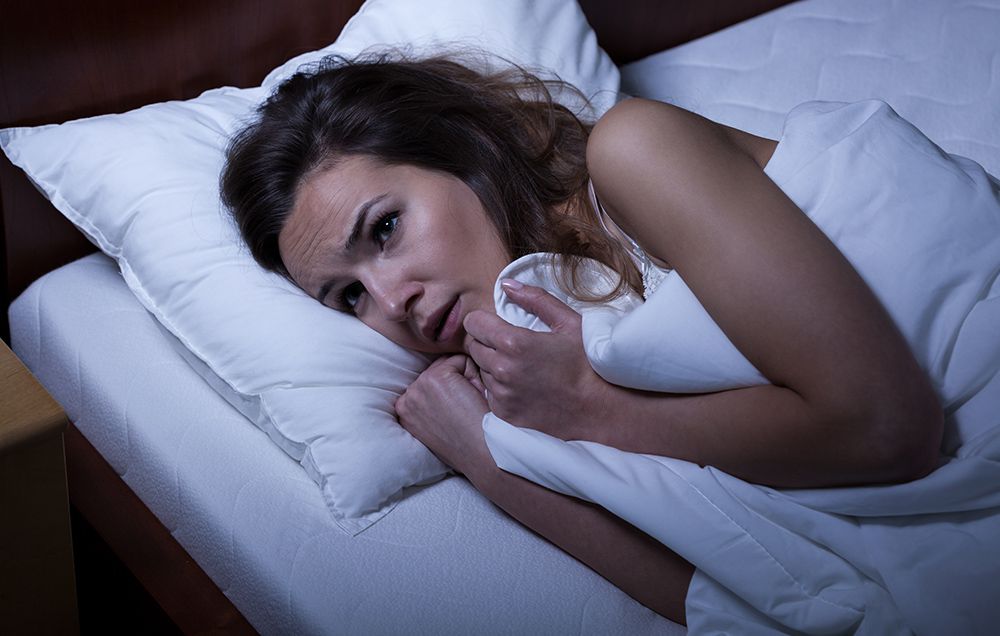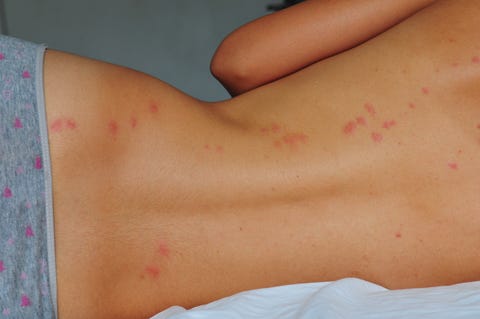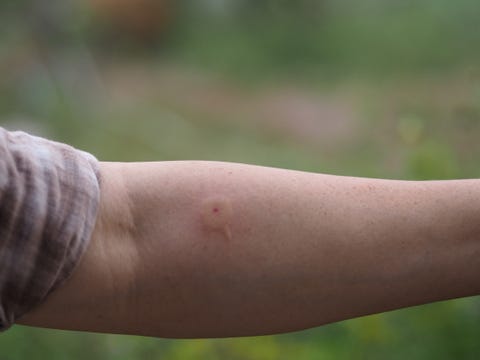Bug bites are an unfortunate little annoyance in life, and the odds are prettttttyyyy high that you’ve been bitten by some creepy-crawly (er, or a variety of creepy-crawlies) in your lifetime. And while you probably just want to scratch the darn spot and move on, it’s wise to try and figure out what actually bit you.
Why? Some bug bites are relatively harmless, but others have the potential to bring on more serious health issues if you don’t treat them appropriately, and fast. Here are several fairly common insect bites you may experience, and how to know whether or not a bite warrants a trip to your doctor’s office.
Bed bug bites
While the thought of bed bug bites may skeeve you out, they’re more annoying to deal with than an actual threat to your health, according to the Centers for Disease Control and Prevention (CDC). Bed bug bites are primarily just super itchy and can keep you up at night. The bigger issue with these pesky bugs is that they can spread really fast and lead to an infestation, and it can be an inconvenient and expensive process to get rid of one. (Also, the idea of little bugs feeding on your blood while you sleep isn’t exactly a comforting thought.)
People can have a range of reactions to bed bug bites, says Nancy Troyano, PhD, a board-certified entomologist with Ehrlich Pest Control. Some people have no reaction at all when bitten, but most people will notice an itchy, red, welt-like mark that looks similar to a mosquito bite, Troyano says. “Bites may appear in a linear fashion if there are multiple bugs feeding, and bites can occur anywhere, but they are often found in areas where skin is readily exposed,” she notes.
Contrary to popular belief, attracting bed bugs has nothing to do with bad hygiene or a dirty apartment. Bed bugs get around by hitchhiking onto your things, so prevention can be tough, says Angela Tucker, PhD, manager of technical services for Terminix. “Knowing this, the best prevention for bed bugs is being watchful during your travels and regular home cleaning,” she says.

You can also keep an eye out for the critters, which are about the size, shape, and color of an apple seed when fully grown. Another sign that bed bugs may be around your space is their byproduct, meaning you might see reddish-brown blood spots on sheets or mattresses, Tucker says.
If you do happen to get bed bug bites, spot-treat them with hydrocortisone cream to try to soothe itch, says David Cutler, MD, a family medicine physician at Providence Saint John’s Health Center in Santa Monica, California. Then, get rid of the infestation—with the help of a professional. “It’s important to see where the bed bugs came from,” Dr. Cutler says. “Then, call in a professional exterminator so you don’t get any more bed bug bites.”
Bee and wasp stings
You’ll usually know it when you get stung by a bee or wasp, because it hurts like hell. “At first, you may not even see anything on the skin,” Troyano says. “However, within a few minutes of being stung, there may be localized swelling and redness around the sting site.” The area might also feel warm, and you might see a small white mark near the center of the swelling (that’s where the stinger went into your skin), she describes.
If you know you have an allergy to bee or wasp stings, follow instructions from your doctor and seek medical care immediately. But if you’re not allergic, you’ll still want to take action. Bees lose their stinger after stinging, Troyano says, and you should try to remove it if it’s still stuck in you. Then, apply ice to reduce swelling, says David Gatz, MD, an emergency medicine physician at Mercy Medical Center in Baltimore. You also may want to take an antihistamine like Benadryl, he says.
The only real way to totally avoid getting stung is to not interact with bees and wasps…obviously. (But that’s not a feasible lifestyle if you ever want to enjoy the outdoors!) So when you’re outside, don’t swat at bees and wasps—just let them be. “In general, if you leave bees and wasps alone, they will leave you alone,” says Tucker.
If you want to be especially cautious, she also recommends skipping flowery perfumes or fragrances and covering any food and drink around you.
Scabies
Scabies is a parasite infestation caused by microscopic mites, according to the CDC. When you have scabies, the female burrows into your epidermis to lay her eggs.
Scabies usually shows up as a rash with small, raised pustules or blisters, and is “intensely itchy,” Troyano says. If you’ve never had scabies before, you might not see the rash for several weeks after you’ve been exposed. But, if you’ve had scabies before, you might see a rash within one to four days of being exposed, she says.
Source: Read Full Article


